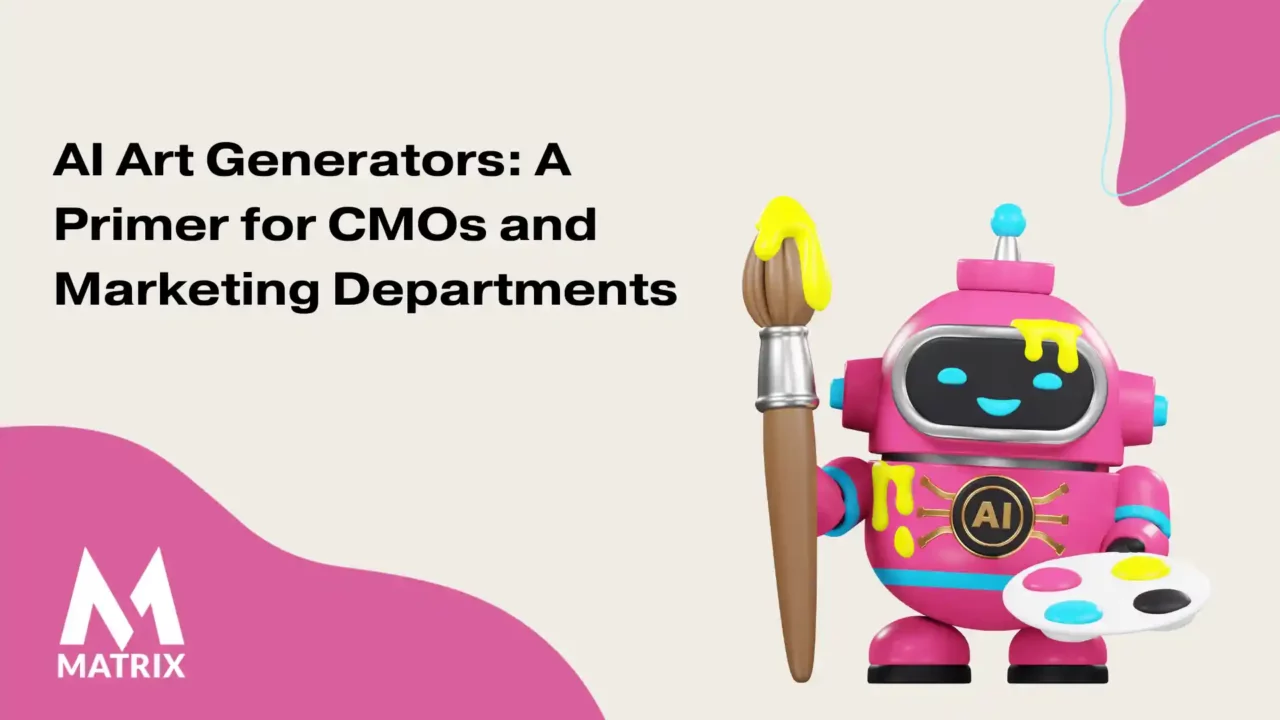AI Art Generators: A Primer for CMOs and Marketing Departments
AI Art Generators: A Primer for CMOs and Marketing Departments
Introduction to AI Art Generators
In today’s fast-paced digital world, AI-driven content creation tools, notably AI Art Generators, are reshaping the landscape of visual marketing.
For Chief Marketing Officers (CMOs), leveraging these tools can result in more efficient, personalized, and impactful campaigns. Here’s a primer on what you need to know about AI Art Generators.
What are AI Art Generators?
AI Art tools or platforms that leverage machine learning (specifically generative algorithms) to produce visual content, including paintings, illustrations, and other forms of visual art.
Essentially, they’re trained on vast datasets of visual content and can generate new, unique artworks or assist designers in enhancing existing concepts. AI tools like AIBrandPad, MidJourney, and Google’s Imagen.
Key Benefits for Marketing:
- Scalability & Efficiency: AI Generators can produce a wide variety of designs in a fraction of the time it would take a human designer.
- Personalization: They can be tailored to produce artwork that resonates with specific target audiences or demographic groups.
- Cost Efficiency: Over time, utilizing AI can save costs, especially for campaigns requiring high volumes of diverse visual content.
- Experimentation: Quickly test different visual strategies to see what resonates best with your audience.
- Consistency: Maintain brand consistency while generating diverse visuals.
Potential Limitations:
- Lack of Emotional Nuance: While AI can mimic styles and aesthetics, it may not capture the deeper emotional or cultural nuances that a human artist can.
- Over-reliance: Relying solely on AI can make campaigns feel impersonal or generic.
- Intellectual Property Concerns: As AI-generated art becomes more common, there might be challenges in determining originality and copyright.
How to Integrate AI Art Generators into Marketing Strategies:

- Augmentation, Not Replacement: Use AI tools to complement human creativity. Let AI handle the generation of basic designs, and then let human designers add the finishing touches.
- Targeted Campaigns: Utilize AI to tailor visuals for specific demographics, geographies, or cultural events.
- A/B Testing: Quickly generate multiple versions of a visual ad and test to see which performs best.
- Feedback Loop: Continuously train your AI tools with feedback, helping them better align with brand aesthetics and goals.
Looking Ahead: The Future of AI in Art and Marketing
As AI technologies evolve, the intersection of AI and art will only grow more profound. We can expect:
- Improved Collaboration Tools: AI will become a more seamless collaborator for designers, suggesting edits, styles, and content strategies.
- Hyper-Personalized Content: As AI gets better at understanding individual preferences, expect hyper-personalized ads tailored to individual tastes.
- Ethical Considerations: The rise of AI in art will spark discussions around ethics, originality, and the nature of creativity.
Why should CMOs care about AI art generators?
AI generators can be a valuable tool for CMOs because they can help to create high-quality, unique visuals for marketing campaigns. Art generators can also be used to generate personalized images for customers, which can help to improve the customer experience.
How do AI generators work?
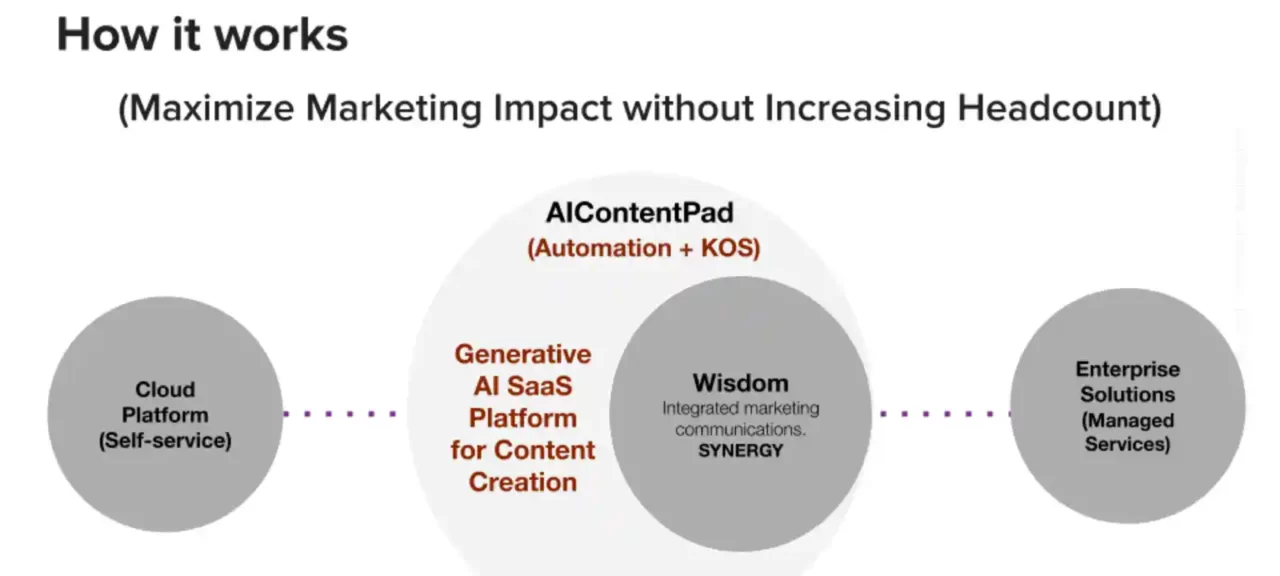
AI art tools typically use a deep-learning model to generate images. The deep learning model is trained on a large dataset of images, allowing it to learn the patterns and features common to different art types.
Once the deep learning model is trained, it can generate new images based on a text prompt or a reference image.
AI art like Imagen uses a deep learning model to generate images. The deep learning model is trained on a massive dataset of images and text, which allows it to learn the patterns and relationships between different types of images and text descriptions.
Once the deep learning model is trained, it can generate new images based on a text prompt. For example, if you give Imagen the text prompt “a cat sitting on a couch,” it will generate an image of a cat sitting on a couch.
Imagen is a diffusion model that starts with a random noise image and then gradually adds details to the image until it matches the text prompt. Diffusion models are known for their ability to generate realistic and high-quality images.
Here is a step-by-step overview of Imagen’s work:
- The user enters a text prompt into Imagen.
- Imagen converts the text prompt into a latent representation, a numerical representation of the text prompt.
- Imagen then uses the latent representation to generate a random noise image.
- Imagen gradually adds details to the random noise image until it matches the latent representation of the text prompt.
- Imagen’s final output is an image matching the text prompt.
Imagen is still under development but has already been used to generate some impressive results. For example, Imagen can generate realistic images of people, animals, objects, and scenes that do not exist in the real world. Imagen can also generate images in different artistic styles, such as Renaissance paintings, Impressionist paintings, and modern art.
AI generators like Imagen have the potential to revolutionize the way we create and consume art. They can be used to create new and innovative forms of art, and they can also be used to make art more accessible to people who are not artists themselves.
When should CMOs use AI generators?
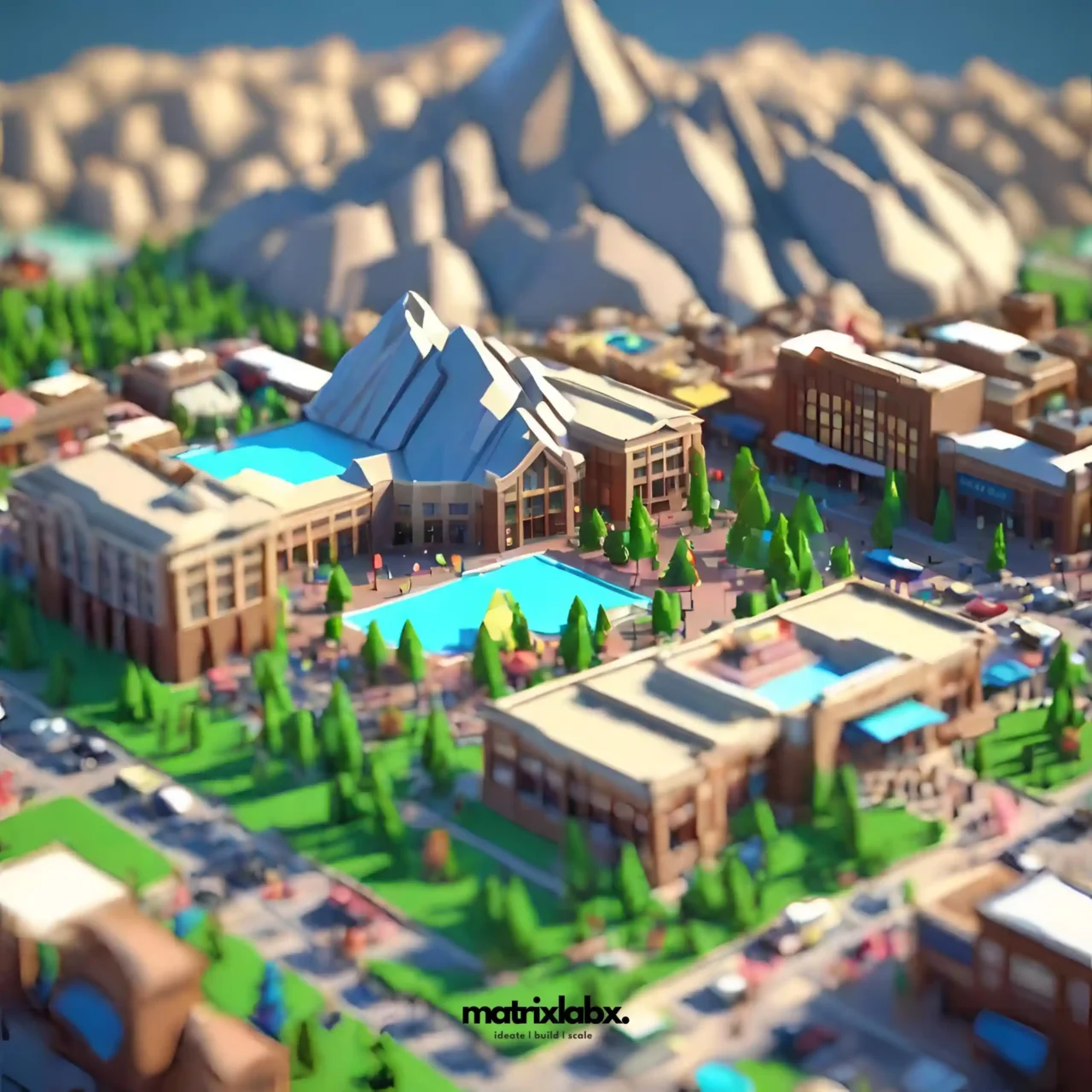
CMOs should consider using AI art generators when creating high-quality, unique visuals for marketing campaigns.
AI art generators can also be used to generate personalized images for customers.
I would advise CMOs to use AI art generators when
- They need to create high-quality, unique visuals for marketing campaigns. AI generators can create various visuals, including images, videos, and GIFs. CMOs can use AI art generators to create visuals that are specific to their target audience and will capture their attention.
- They need to generate personalized images for customers. AI generators can generate personalized customer images based on interests, demographics, and purchase history. CMOs can use AI art tools to create personalized images to make customers feel valued and appreciated.
- They need to create visuals for social media posts. AI art can be used to create eye-catching and engaging visuals for social media posts. CMOs can use AI art tools to create visuals that will help to increase brand awareness and engagement on social media.
- They need to create infographics and other types of educational content. AI art can be used to create visually appealing and informative infographics and other types of educational content. CMOs can use AI art gen to create educational content that will help to educate and engage their customers.
Here are some specific examples of how CMOs can use AI art gen:
- An e-commerce company could use an AI art generator to create personalized product recommendations for customers.
- A social media company could use an AI art generator to create unique and engaging visuals for its social media posts.
- A software company could use an AI art generator to create educational infographics about its products.
- A travel company could use an AI art generator to create personalized customer vacation packages.
AI art tools are a powerful tool that CMOs can use to create high-quality, unique, and engaging visuals for their marketing campaigns.
In addition to the above, I would encourage CMOs to use AI art gen to experiment with new and innovative forms of marketing. For example, CMOs could use AI art generators to create interactive art experiences, virtual worlds, and other immersive marketing experiences.
I believe that AI art generators have the potential to revolutionize the way we market products and services. CMOs who are early adopters of AI art gen will be well-positioned to succeed.
Who should use AI art tools?
Anyone creating images can use AI art tools, including CMOs, marketing professionals, designers, and artists. I can have the AI tool look at thousands of pictures and select the best from what I tell it. Tools like MidJourney are crazy.
How Matrix Uses AI-generated art tools
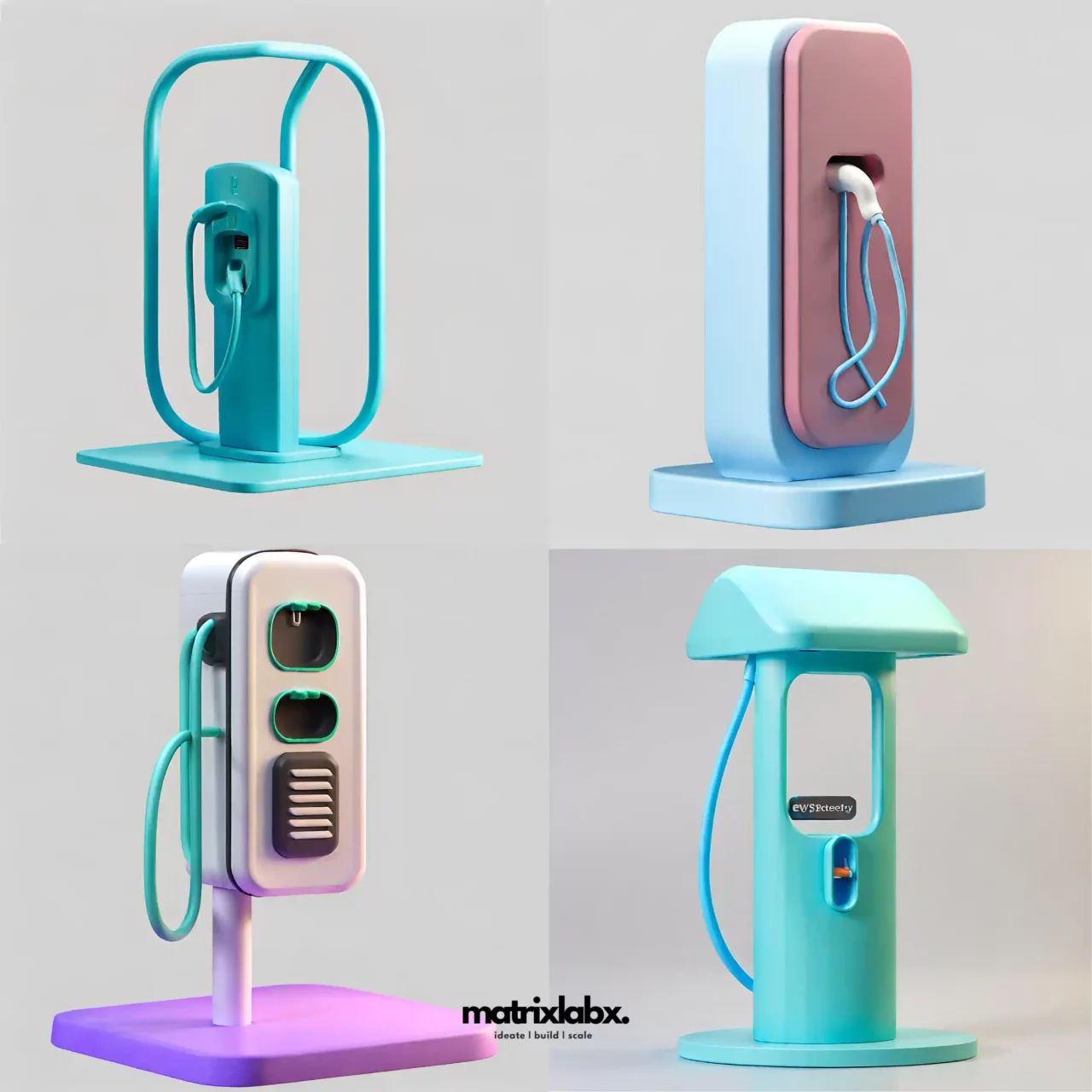
Leveraging AI-Generated Art Tools in the Marketing Department: Best Practices
The fusion of AI and art has resulted in an innovative suite of tools that marketing departments can harness for various objectives.
To maximize the potential of AI-generated art tools, it’s essential to understand their capabilities and incorporate them strategically. Here are best practices for integrating these tools into your marketing department’s operations:
1. Understand the Capabilities:
- Research and Training: Start with educating your team about the AI tools available and their potential applications. Organized workshops or training sessions can be immensely beneficial.
- Stay Updated: The world of AI is continually evolving. Ensure you’re abreast of the latest developments and features.
2. Define Your Objectives:
- Campaign Enhancement: Are you using AI to augment existing campaigns with visuals that resonate with your audience?
- Personalization: Are you aiming to deliver personalized content tailored to each user’s preferences?
- Efficiency & Volume: Is your goal to produce high volumes of content in a short period?
3. Augment, Don’t Replace Human Creativity:
- Collaborative Approach: Use AI tools as a starting point or to generate drafts. Let human designers add unique touches, ensuring brand consistency and authenticity.
- Feedback Mechanism: Allow designers to provide feedback on AI outputs. Over time, this iterative process will improve results.
4. Optimize Personalization:
- Segmented Campaigns: AI can help design visuals for specific audience segments, ensuring more resonant marketing collateral.
- Dynamic Content: Use AI tools to create dynamic ads that change based on user behavior, location, or other factors.
5. Experiment and A/B Test:
- Multiple Variants: Easily generate and test multiple campaign visual concepts to determine the most effective.
- Adapt Quickly: Adapt and optimize your visuals based on real-time feedback.
6. Address Intellectual Property Concerns:
- Clear Licensing: Ensure you have the appropriate rights to use and modify AI-generated visuals.
- Originality Checks: Use tools to ensure the uniqueness of AI-generated content, preventing potential copyright infringements.
7. Engage Your Audience in New Ways:
- Interactive Campaigns: Use AI to create interactive art experiences, engaging your audience in novel ways.
- User-Generated Content: Allow users to interact with AI art tools in campaigns, fostering community and engagement.
8. Measure, Analyze, Refine:
- Performance Metrics: Regularly measure the effectiveness of AI-augmented campaigns against traditional ones.
- Continuous Learning: Adjust strategies based on insights and learnings from past campaigns.
9. Ethical Considerations:
Transparency: Be clear about using AI-generated content, ensuring audiences are aware.
Diversity & Inclusion: Ensure AI tools are trained on diverse datasets to prevent unintentional biases in generated content.
AI-generated art tools offer a wealth of opportunities for marketing departments. However, their effectiveness lies in a balanced approach, where technology complements human creativity rather than replacing it.
By staying informed, experimenting, and adhering to best practices, marketing departments can unlock new levels of engagement and efficiency.
How Lily Got it Right – On Her Third Day
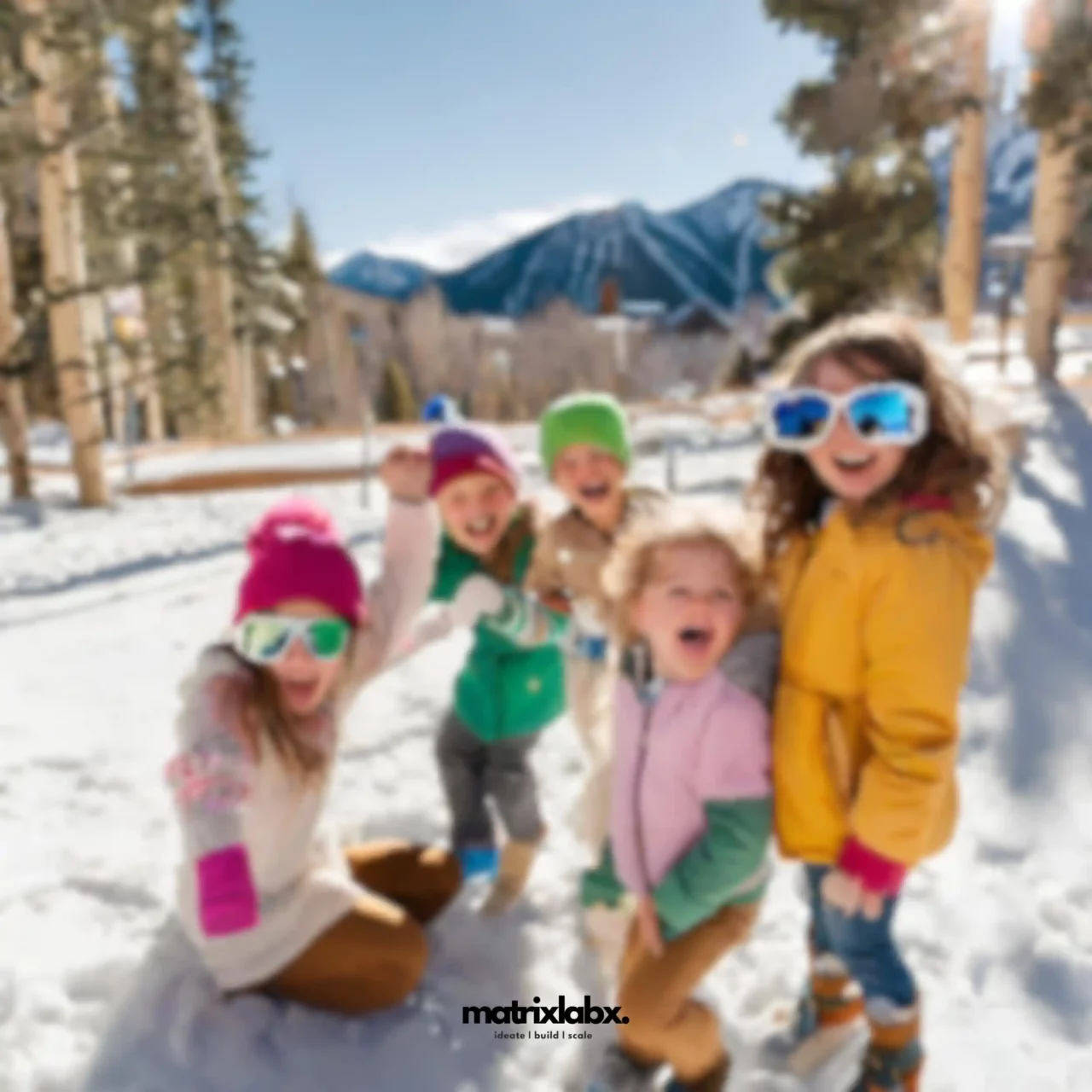
Lily, an executive assistant at Matrix Marketing Group, was tasked with creating the perfect graphic design for a prospective client. The other marketing executives met with other clients, so Lily was alone.
Lily knew she needed to create something unique and eye-catching, but she was overwhelmed. After all, it was only her third day on the job, and didn’t know the ropes yet, but she took the initiative to help the prospective client.
During employee orientation, she was introduced to a tool that could generate art and had been playing with it in her free time.
She decided to try using an AI art generator.
Lily entered a text prompt into the AI art generator, describing the type of image she wanted. The AI art generator generated a variety of images, and Lily was able to select the perfect one.
The prospective client was delighted with the graphic design and signed on with Matrix Marketing Group later that day. Her initiative and follow-through did not go unnoticed and will send her on a career with many rewards.
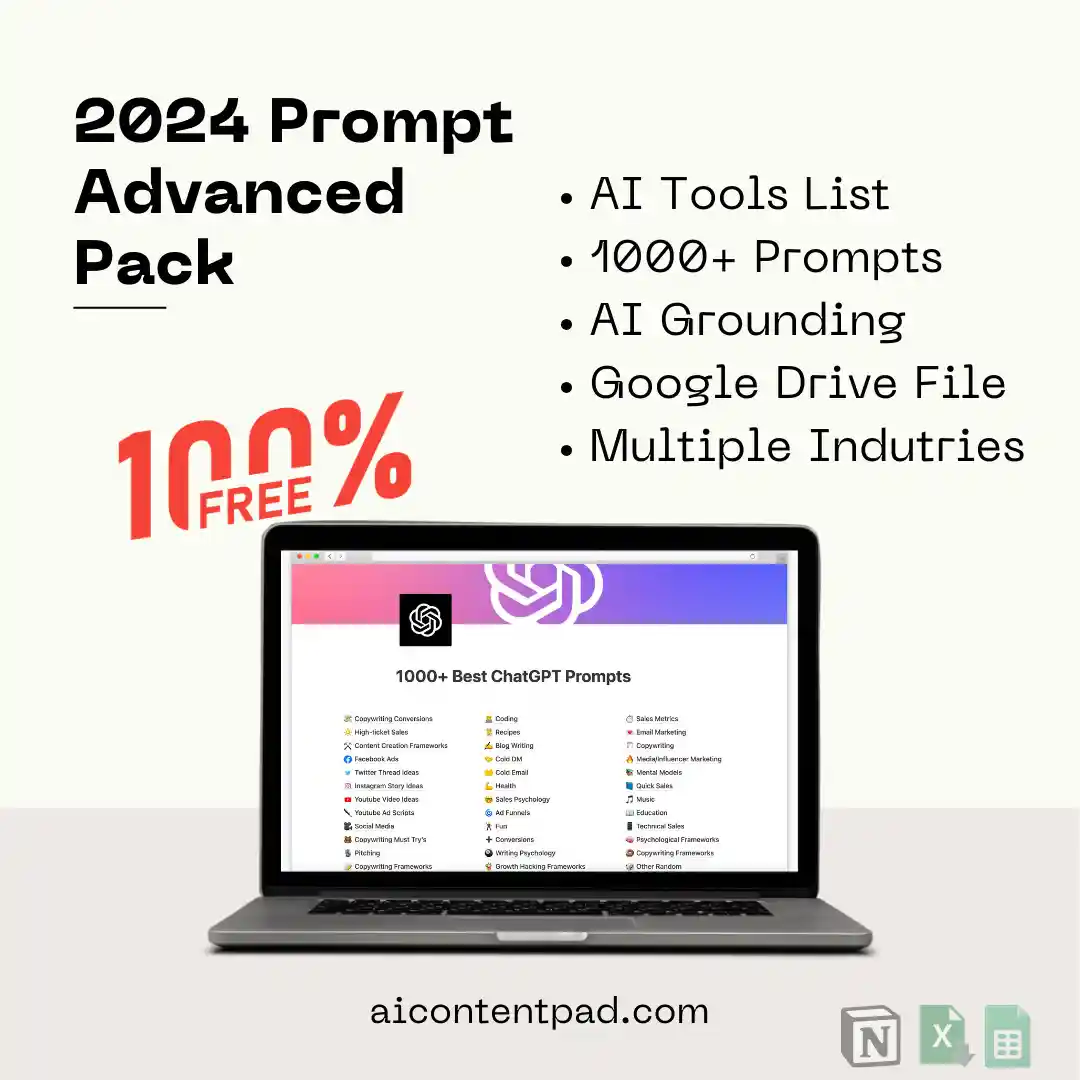
AI Toolkit for Technology Companies
We’ve included a complete list of AI tools for technology firms, with over 800 free prompts and an AI Cheat Sheet to help you get started and leverage artificial intelligence faster.
AI Toolkit for Technology Companies
Conclusion
AI art tools can be valuable for CMOs and other marketing professionals. They can be used to create high-quality, unique visuals for marketing campaigns and to generate personalized images for customers.
Here are some additional tips for CMOs considering using AI art gen:
- Use AI art creation to generate ideas for new marketing campaigns.
- Use AI art tools to create personalized images for customers.
- Use AI art creation to create unique and eye-catching visuals for social media posts.
- Use AI art tools to create infographics and other educational content.
- Experiment with different AI art creations to find the best for your needs.
For CMOs, understanding and harnessing the power of AI Art Gen is crucial in this ever-evolving digital landscape. While they’re not a replacement for human creativity (HITL), they offer an exciting opportunity to scale, personalize, and innovate in visual marketing. We have a list of the 10 best AI art generators and our opinion is well with a review of the top AI art generators.
By blending the strengths of AI with human insight and emotion, brands can craft more compelling and efficient marketing campaigns.

